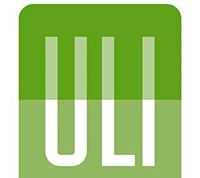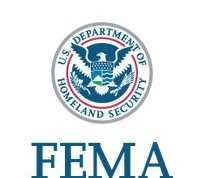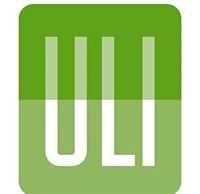Prepared Remarks of Richard Cordray
Director of the Consumer Financial Protection Bureau
“Know Before You Owe” Mortgage Field Hearing
Boston, MA
WASHINGTON, D.C. – November 21, 2013 – (RealEstateRama) — The dream of having a place of one’s own has long been part of our American way of life. For many people today, even after all the heartache we have experienced in the past five years since the financial crisis and the collapse of the housing market, owning a home still means something special. It means a solid and certain foundation of stability and even a kind of permanence. It means the prospect and the tangible opportunity to climb the economic ladder. It means putting a stake down on a better life. As T.S. Eliot said, “Home is where one starts from.”
Mortgage in National News |
Mortgage in Social Media |
As the housing market gains momentum and a growing number of consumers emerge from being underwater on their homes, people are feeling encouraged. They are, once again, looking to find a way to realize that dream in their own lives – to have a place of their own to put down roots, raise a family, and retire someday.
Last January, we put in place new protections to improve the functioning of the mortgage market by preventing creditors from extending loans to consumers who do not have the ability to repay them. Today, we are putting in place new measures that ensure consumers have the information they need, when they need it. By implementing rules that allow people to better understand the terms of the mortgage deal they are being offered, the Consumer Bureau will help them shop around for a mortgage that makes sense for them. These rules give greater control to consumers so they can take charge of the decision they are about to make. The end result will be a more competitive and user-friendly shopping experience where consumers can “know before they owe.”
***
When people take the plunge and decide to buy a home, they usually put pretty careful thought into what kind of place they want and where it is located. They consider their deal-breakers and their wish lists. They may be looking for a house with a garage, or lots of sunlight, or maybe a backyard where their children can play. To see what is out there, they peruse websites, visit open houses, and scour neighborhoods in particular school districts.
Then there is the whole financial side of the transaction. Buying a home, after all, is not an everyday decision; it is one of the biggest financial decisions most people will make in their lifetimes. According to the latest numbers from the National Association of Realtors, the median price of homes purchased in the United States is now $207,000. By comparison, the median household income is about $51,000, according to the Census Bureau. It is crucial to consider the numbers carefully before making a potentially long-term commitment.
For most consumers, an important element of the process is determining how much of a down payment they can afford to make, and how large a mortgage they can afford to repay. To make that determination, consumers may seek advice from family and friends, financial advisors, or other sources such as the Internet. Many consumers contact a mortgage originator at a bank, credit union, mortgage company, or brokerage firm. But for too many people, this is when the shopping, the calibrating, and the research grind to a halt. Consumers too often fail to apply the same thought and care to shopping for a mortgage as they do when shopping for a home.
The consumer needs to be better empowered to shop around for a mortgage. People who are buying a home deserve to be the drivers of this process, not the passengers. Whether a consumer shops among multiple lenders or talks to a single lender, there are many variables to consider because not all mortgages are the same. Closing costs can vary from lender to lender; fees can vary from loan to loan. Failing to understand these differences, and make good choices about them, can have lasting consequences for buyers and their families.
Consumers need to assess not just the interest rates and the closing costs, but the mortgage insurance costs, the application fees, and how the interest rate might change over the life of the loan. In addition, buying a home may involve purchasing services from multiple parties, such as realtors, title companies, and insurance providers. Those costs should be considered carefully and evaluated against the competition and in light of the options available.
Most important, a consumer needs to understand the risks that may be associated with the terms of different mortgages. During the years leading up to the financial crisis, too many consumers took out mortgages with risky features they did not understand – features like “teaser rates” or “interest only” periods, which could lead to large increases in monthly payments down the road.
Getting stuck with the wrong mortgage can cost tens of thousands of dollars over the life of the loan. It can even bring about a foreclosure, which costs a family their home and damages their prospects for buying another one anytime soon. Too many Americans learned this lesson the hard way during the financial crisis. And we all saw the broader consequences that can result for everyone in this country when these bad decisions pile up: the sharp decline in home prices, the lasting problems in the job market, and the severe decline in the value of our investments and retirement savings.
***
Today the Consumer Financial Protection Bureau is putting in place rules that will help consumers shop around for the right mortgage. We are doing this by overhauling the mortgage disclosure forms currently required by federal law and putting in their place two simpler, easy-to-understand “Know Before You Owe” forms.
For decades, the Congress has tried to help consumers get the information they need to decide what is best for them when they shop for a home by requiring lenders to disclose certain information. Generally, within three business days of applying for a loan, federal law requires mortgage lenders to deliver two different disclosure forms to consumers: an early Truth in Lending Statement and a Good Faith Estimate. At the closing stage of the transaction also, federal law generally requires that two different disclosure forms again be provided to consumers: a HUD-1 settlement statement and, most of the time, a final Truth in Lending Statement.
In the Dodd-Frank Act, Congress instructed the Bureau to integrate these disclosures to avoid the confusing duplication that was occurring at each stage. Accordingly, under our new rules, consumers will no longer receive all of these overlapping forms. Instead, consumers will get a single form shortly after applying for a loan (known as the Loan Estimate), and they will get one form shortly before finalizing a loan (known as the Closing Disclosure). These new forms will enable consumers more readily to spot crucial information that demands their focus, such as the interest rate, monthly payments, and total closing costs, as well as any special risk factors that could lead to payment increases over time.
We have been working on this project for more than two years. Today’s forms can very much be credited to your Senator and my friend, Elizabeth Warren. Unfortunately, she is not able to join us today because she is in Washington fulfilling her Senatorial duties. But she is certainly here in spirit and we thank her for everything she has done, not just on this “Know Before You Owe” project, but also to conceive, secure, and build up our new agency that is dedicated to protecting consumers in the financial marketplace.
***
The key to this project was to figure out how to make these forms work for consumers. The best way to do that is to get feedback directly from consumers and industry. So we went across the country, visiting dozens of cities and interviewing a large cross-section of people in a rigorous qualitative consumer testing process. We conducted testing with industry as well, because we wanted to see how people who work in this business would use the forms and explain them to consumers. We developed prototypes, and then we kept working and working to improve the forms to arrive at today’s final versions. We found that the interest in our efforts was enormous. For example, when we supplemented our testing by putting different versions of our prototypes out for the world to see, they received more than 27,000 comments on our website.
One of our main goals with the Loan Estimate and Closing Disclosure is to improve consumer understanding. With a simple accounting of payments and fees, these new forms help consumers see just what they are getting into – the terms of the loan, the obligations, and how they could change over time. We have made it a point to present the information in plain language, in a format that is easy to follow, where the costs and risks of the loan are made clear. The key information is labeled in an obvious manner, so consumers can come to grips with questions like, “Can this amount increase after closing?” And right there, up front on the first page, consumers see what they need to see the most: the loan amount, their monthly payments, taxes, insurance, other property costs, and the total cash required to close the loan.
After we proposed the forms, we conducted further testing, including a quantitative validation study in which we gave some consumers the current versions and others the new oness, and then compared their ability to use them. Test results showed that participants who used our new forms understood them better in key respects.
Some of the improvements were substantial. For example, consumers using the new forms provided more correct answers about a sample mortgage, improving their scores by 29 percent. Other changes were even more dramatic. By identifying the loan amount in big, bold font, and making it one of the first things a consumer sees, consumers were far better able to recognize it; their performance on this point improved by as much as 75 percent. And for consumers presented with complicated loan products like adjustable rate mortgages, their ability to compare the highest possible total monthly payment between two loans improved by 98 percent.
Our second major goal is to improve the opportunities for comparison shopping. Consumers will first get the Loan Estimate within three days after they apply for a loan. They can take this form, apply for another loan elsewhere, and then make a direct comparison between the two forms. They will be able to see, for example, who is providing better rates and cheaper application fees and who is quoting better pricing on insurance costs. And consumers will be better able to weigh those price differences against the different terms each lender is offering – such as when interest rates are likely to adjust on one loan compared to the other. Consumer testing again showed that our redesigned forms consistently outperformed the current disclosures, with people performing as much as 42 percent better when it comes to assessing competing offers.
When consumers have decided on a loan, our new rules also require that they must get the Closing Disclosure three days before the closing occurs. It summarizes the final loan terms and costs, and also provides a detailed accounting of the transaction. Before people arrive at the closing, they can compare this form to their Loan Estimate to see if anything has changed. Our form makes that comparison very obvious, which minimizes the potential for “bait and switch” increases in rates, fees, or settlement costs. And for certain changes that are especially material, consumers must be provided advance notice at least three days before the closing.
This three-day window allows consumers some time to process the information before the transaction is finalized. It also gives consumers time to negotiate over any changes that may have occurred. Here too, our forms performed 28 percent better among actual consumers than the current forms in being able to compare the original loan offer to the final terms of the deal.
The underlying premise for both the Loan Estimate and the Closing Disclosure is that consumers will be better able to understand the mortgages they are buying and the costs they are paying. They will be better able to shop for the right mortgage that suits their needs. The new forms make it easier for consumers to own a home by helping them own the process of buying a home.
***
At the Consumer Bureau, we believe our responsibility does not end with finalizing this new rule. We must make sure lenders put these changes in place effectively. So as we look ahead, we will work with industry to help them implement the provisions of the rule and we will work with consumers to make sure they understand and benefit from these new improvements.
As part of this process, we are also very enthusiastic to work with all stakeholders to improve the overall mortgage closing experience. For a long time, many have come to agree that the stack of closing documents is way too large. Some of these forms were intended to help consumers better understand the costs and risks of their mortgages. Others were devised by lenders as defensive measures to minimize the prospects of future litigation. Still others represent federal, state, and local government requirements, some of which may have become outmoded. The undeniable result is information overload: too much to absorb during the closing process. This burdens lenders without helping consumers. Indeed, it is counterproductive insofar as it causes consumers to zone out and sign documents without properly evaluating the information that is critical to understanding the largest financial transaction of their lives. And many leave with a new anxiety, as they find themselves wondering what was buried in the mound of paper that may create some nasty surprise in the years ahead.
So as part of our “Know Before You Owe” initiative, we are making a commitment to work with industry to improve the mortgage closing experience for consumers through technology. We believe that “eClosings” could represent a positive development along these lines, and we want to know more about how we can foster innovation in this area. By reducing the visual tyranny of the stack of closing documents, we can focus more attention on the new user-friendly Closing Statement, which may enable further advances in consumer education and understanding. We recognize that one thing we can do is work to help remove obstacles to this approach, and we will do so. We also want to work collaboratively with industry, with consumer advocates, and with government officials to take a close look at all the closing documents and identify how they can be reduced or eliminated if they are no longer adding value to the mortgage transaction.
In addition, we are working to help inform and empower consumers earlier in the mortgage process. We will soon be rolling out new tools and resources on our website to help consumers better understand the mortgage market and the choices they should be considering carefully as they think about buying a home. You can go to consumerfinance.gov/owning-a-home and sign up for our email list to receive more information as it becomes available.
Finally, we are also aware that some companies are creating electronic “smart” versions of various mortgage documents and are looking into creating “smart” versions of the information contained on the new Loan Estimate forms. We are asking industry participants, especially those already pursuing new technological advances, to reach out and join in our efforts to improve the mortgage origination process for the benefit of consumers and industry alike.
So today is a new beginning. With the rule-writing process now complete, we are allowing a very reasonable time frame – 21 months – for industry to implement these changes. During that period, as I just sketched out, we will continue our ongoing “Know Before You Owe” efforts to improve the mortgage market and the mortgage closing experience for consumers. This is the right priority for the Consumer Bureau and for the country. So we will keep at it. Thank you.
###
The Consumer Financial Protection Bureau is a 21st century agency that helps consumer finance markets work by making rules more effective, by consistently and fairly enforcing those rules, and by empowering consumers to take more control over their economic lives. For more information, visit consumerfinance.gov.













